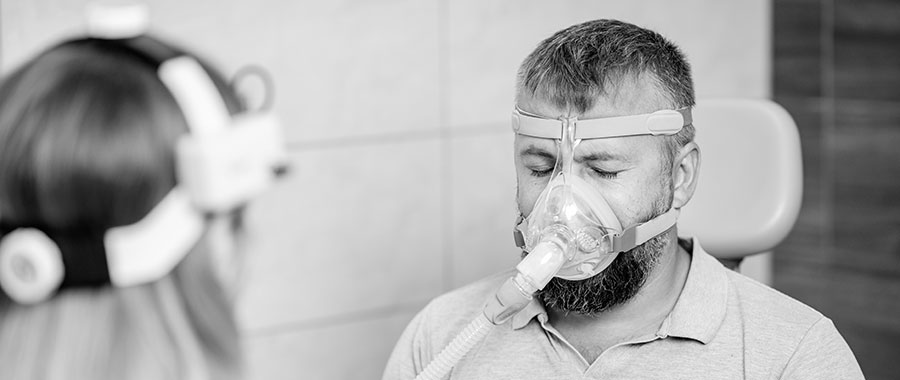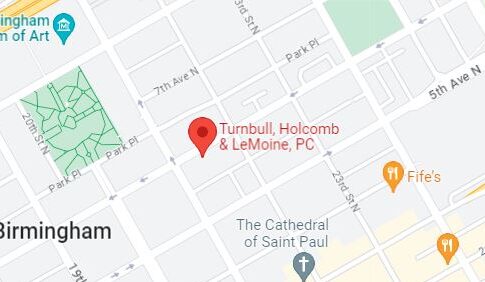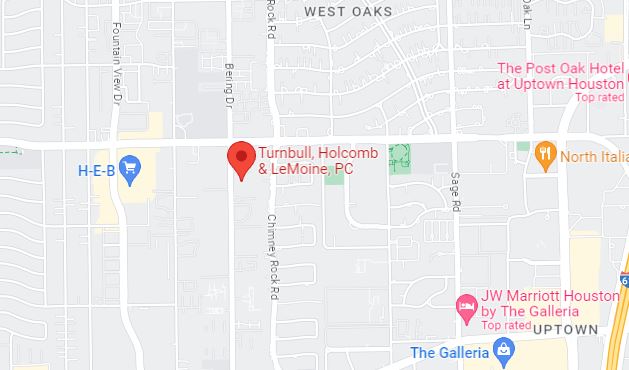

Summary
Philips Respironics, a division of Philips company, recalled several CPAP, BiPAP and mechanical ventilator machines on June 14, 2021. The recall was initiated after Philips discovered that a piece of foam within the air tract of the device used for noise suppression was susceptible to breakdown, causing at least three toxic and carcinogenic volatile organic compounds (VOCs) to be emitted. All of these chemicals are toxic chemicals with a long list of adverse health effects, especially when inhaled. Philips CPAP lawsuits and Philips CPAP class action litigation is currently in the very early stages of litigation. Turnbull, Holcomb & LeMoine are capable and experienced attorneys who can take Philips mass tort cases such as these the full distance to a jury trial. Contact us for a free evaluation of your case.
Philips Respironics Sleep and Respiratory Care Devices
Philips Respironics is a division of Koninklijke Philips N.V., a Dutch multinational conglomerate founded in 1891. Philips manufactures a wide variety of healthcare products. However, they sell respiratory devices which have now been determined to be hazardous to those people who have trusted and relied on them. Philips has manufactured and released several devices that have been identified as hazardous to users of the machines, specifically, continuous positive airway pressure therapy (CPAP) machines, bilevel positive airway pressure (BiPAP) machines, and mechanical ventilator devices. All of these devices are intended for people who need assistance breathing, due to sleep apnea, disturbed breathing, chronic obstructive pulmonary disorder (COPD), chronic asthma, recovery after surgery, and others causes.
Philips CPAP Recall
On June 14, 2021, Philips issued a recall of specific CPAP, BiPap and mechanical ventilator devices. The recall contains two primary instructions for affected individuals:
- Continue life-sustaining ventilation prescribed therapy and consult with your physician
- Stop use of BiLevel PAP & CPAP devices immediately
An undated copy of the recall letter sent to Philips consumers of the recalled products goes into further details of the problem and the associated risks. That letter states that, “the polyester-based polyurethane (PE-PUR) sound abatement…foam may degrade into particles which may enter the device’s air pathway and be ingested or inhaled by the user, and…the PE-PUR foam may off-gas certain chemicals”. The recall affects the following Philips products:
Continuous Ventilator, Minimum Ventilatory Support, Facility Use
- E30 (Emergency Use Authorization)
Continuous Ventilator, Non-life Supporting
- DreamStation ASV
- DreamStation ST, AVAPS
- SystemOne ASV4
- C Series ASV, S/T, AVAPS
- OmniLab Advanced Plus In-Lab Titration Device
Non-continuous Ventilator
- SystemOne (Q Series)
- DreamStation (CPAP, Auto CPAP, BiPAP)
- DreamStation Go (CPAP, APAP)
- Dorma 400, 500 CPAP
- REMstar SE Auto CPAP
Continuous Ventilator
- Trilogy 100 Ventilator
- Trilogy 200 Ventilator
- Garbin Plus, Aeris, LifeVent Ventilator
Continuous Ventilator, Minimum Ventilatory Support, Facility Use
- A-Series BiPAP Hybrid A30 (not marketed in US)
- A-Series BiPAP V30 Auto Ventilator
Continuous Ventilator, Non-life Supporting
- A-Series BiPAP A40 (not marketed in US)
- A-Series BiPAP A30 (not marketed in US)
How is the foam defective?
This foam is at the heart of the product defect. A further look into the designs of the product reveals that the foam is embedded in the machines for sound abatement. The reason that the foam has such a high potential for danger in this situation is that it lies within the airway tract of the device, meaning that all inhaled air passes through the polyurethane foam and into the respiratory system of the user. Philips has admitted that the foam degrades over time into particles that are later inhaled or ingested by the user, and that compounds emitted from the foam include various toxic volatile organic compounds (VOCs). In one safety alert bulletin from Philips it was suggested that VOCs are present as soon as the device is taken “out-of-the-box.” However, it has been suggested elsewhere that the VOCs become dangerous when the foam starts to degrade, which is the reason for the recall itself. Taken into consideration carefully, it appears there is the potential for danger from day one when using these devices right off the shelf, and it is clear that these products are seriously defective and harmful.
What are the health risks of Philips CPAP recalled devices?
Philips itself states in a recall letter that the potential for adverse health effects caused by its own products “can result in serious injury which can be life-threatening, cause permanent impairment, and/or require medical intervention to preclude permanent impairment”. Additionally, “Philips also has received reports of headache, upper airway irritation, cough, chest pressure and sinus infection. The potential risks of particulate exposure include: irritation (skin, eye, and respiratory tract), inflammatory response, headache, asthma, adverse effects to other organs (e.g. kidneys and liver). The potential risks of chemical exposure due to off-gassing include: headache/dizziness, irritation (eyes, nose, respiratory tract, skin), hypersensitivity, nausea/vomiting, toxic and carcinogenic effects”. Some users of these devices were making comments on the internet suggesting that the products were okay because they didn’t see any particle breakdown or matter within the device at any time during its use. However, it has been made clear that just because you can’t see the particles, that does not mean the chemicals are not being emitted.
In another recall document issued by Philips titled “Philips recall clinical information for physicians and providers”, Philips lists the following VOC chemicals that have been revealed to be present and emitted from the devices in laboratory testing: toluene diamine, toluene diisocyanate, and diethylene glycol. A closer look at these chemicals reveals the dangers they present to the human body.
Dangers of Toluene Diamine
According to the CDC National Institute for Occupational Safety and Health (NIOSH), toluene diamine is a “colorless to brown, needle-shaped crystals or powder,” with exposure routes to the body of “eyes, skin, respiratory system, blood, cardiovascular system, liver”. The same document lists the chemical as causing symptoms of “irritation eyes, skin, nose, throat; dermatitis; ataxia, tachycardia, nausea, vomiting, convulsions, resp depression; methemoglobinemia, cyanosis, headache, lassitude (weakness, exhaustion), dizziness, bluish skin; liver injury…[and in animal testing] liver, skin & mammary gland tumors”. An EPA document on the hazard summary of toluene diamine also lists symptoms of “eye irritation sometimes leading to permanent blindness…respiratory problems…rise in blood pressure…dizziness, convulsions, fainting and coma.” This same document expands on the potential for cancers caused by the chemical, stating that, in animal research, there is a “significant increase in the incidence of a large variety of tumor types, including liver, mammary gland, subcutaneous fibromas, lung lymphomas, and leukemia”.
Dangers of Toluene Diisocyanate
According to the CDC National Institute for Occupational Safety and Health (NIOSH), toluene diisocyanate is a “colorless to pale-yellow solid or liquid (above 71°F) with a sharp, pungent odor,” with exposure routes to the body of “inhalation, ingestion, skin and/or eye contact”. The chemical causes symptoms o, “irritation eyes, skin, nose, throat; choke, paroxysmal cough; chest pain, retrosternal (occurring behind the sternum) soreness; nausea, vomiting, abdominal pain; bronchitis, bronchospasm, pulmonary edema; dyspnea (breathing difficulty), asthma; conjunctivitis, lacrimation (discharge of tears); dermatitis, skin sensitization” and targets the organs of the “eyes, skin, and respiratory system”. The EPA hazard summary of toluene diisocyanate is even more revelatory regarding the health hazards, stating that “severe irritation of the skin and eyes and affects the respiratory, gastrointestinal, and central nervous systems (CNS). Chronic inhalation…in humans has resulted in significant decreases in lung function in workers, an asthma-like reaction characterized by wheezing, dyspnea, and bronchial constriction. Animal studies have reported significantly increased incidences of tumors of the pancreas, liver, and mammary glands from exposure.”
Dangers of Diethylene Glycol
Diethylene Glycol is a virtually odorless, colorless liquid with a sweet taste and is often used in antifreeze solutions for vehicles and as a solvent. It is toxic and causes severe systemic complications such as coma, seizures, peripheral neuropathy, neurological complications, and hepatorenal failure. Diethylene glycol is not documented specifically by NIOSH and the EPA as are the above chemicals. However, it is highly toxic.
What Does This All Mean?
Essentially, Philips itself has admitted that the devices they have been manufacturing and releasing to patients are defective and that they emit at least three highly toxic chemicals directly into the respiratory system of the people who use them. No logical person would ever sign up to be exposed to three carcinogens that have links to cancer and a long list of adverse health effects, much less to breathe from a machine that emits them for 8 or more hours a day. Philips’ extreme negligence and lack of due diligence, failing to ensure the machines’ basic safety before mass marketing them to the public, is simply shocking and are the reason for the many CPAP lawsuits that have been filed. If you are using any one of these devices, you need to contact your physician immediately and arrange to change devices to a manufacturer that does not have this critical, hazardous design error. And if you are a user of one of these devices and have been experiencing any hazardous health effects, initiating a claim of the many existing Philips CPAP lawsuits is a way forward for compensation. Contact Turnbull, Holcomb & LeMoine for a free and confidential evaluation of your case.
Philips CPAP Lawsuits and Class Action Litigation
Philips CPAP lawsuits and class action litigation remains in its early stages. To date, there have been no settlements or verdicts reported. Cases are pending and new claims and lawsuits are being filed regularly because of the broad scope of this egregious mass tort issue. There is a multi-district litigation pending in a federal court in Pennsylvania, to handle many of the claims that are being filed. Ultimately, some of those CPAP lawsuits will likely be tried to a jury. Turnbull, Holcomb & LeMoine have the resources, expertise, and experience to try this type of case and achieve a successful outcome, one which not only compensates the victims but includes punitive damages for the failures of the Philips who must be held accountable for their negligence. Whether you are an attorney currently representing a victim in any CPAP lawsuits, or are a person or family member of someone directly affected, you can end your search for representation here and trust Turnbull, Holcomb & LeMoine to not only litigate your case, but carry it all the way to trial for the best possible outcome.
Our Qualifications for Philips CPAP Lawsuits
At Turnbull, Holcomb & LeMoine, we are recognized as a national law firm and are licensed in over 8 states. Our reputation speaks for itself, and we are known for our enduring resolve to take cases to trial that other attorneys simply did not have the capabilities and resources for. Numerous trials with successful outcomes and regular trial awards exceeding our clients’ expectations, we regularly push the bar higher in our efforts to bring justice to plaintiffs who need the best representation at trial. Preparation is the name of the game when we appear in the courtroom at trial. We focus on strategic structuring of trial arguments, in-depth witness preparation, comprehensive jury research, case strategies built through focus groups and mock trials and have a reputation for winning against deep pocketed corporations. We offer regular communication and case updates to parties of interest, competitive fee agreements and are committed to maximizing results.
What’s next?
If you or a loved one have suffered negative health effects after using one of the Philips CPAP, BiPAP, or mechanical ventilator devices listed above, you are in the right place. Similarly, if you are an attorney who is currently representing a client who wants to further litigate their claim against Philips and take it to trial, then you are in the right place. Or if your client has decided to opt-out of a class action settlement, your search ends here. Simply call us at (888) 488-9616 or contact us on our website to schedule a free and confidential consultation with a highly qualified trial attorney to discuss how we can help and take your case to the next level.





